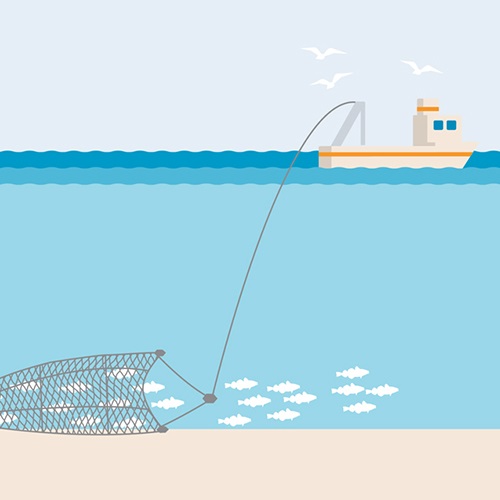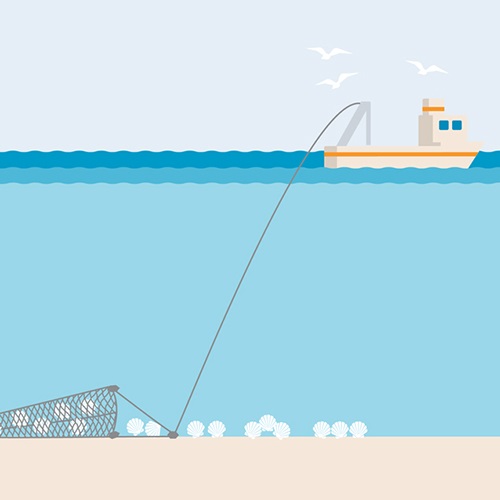Stationary traps, or pots, typically made from wood, wire netting or plastic, are used to catch crustaceans such as lobsters and crabs. Though the size and shape of traps may vary, all feature a cone-shaped entrance tunnel through which a crab or lobster is enticed with bait, but cannot escape through.
Traps are deployed on the seabed for around 24 hours before being hauled aboard a boat for harvesting and re-baiting. Although they can be laid out individually, they are more commonly laid out in strings (fleets) with a number of traps attached to a long rope.
/pots-and-traps-illustration.jpg?sfvrsn=9c7b499f_4)
MSC certified fisheries, such as the Normandy and Jersey lobster fishery, take measures to ensure that undersized individuals can escape through the mesh walls of their traps. Exclusion devices are also used to prevent larger marine animals such as sea lions from accidentally becoming entangled while foraging for shellfish. MSC certification resulted in the Western Australian rock lobster fishery reducing its sea lion bycatch to zero.
Find out more

Bottom trawl fishing
Bottom or demersal trawling is used worldwide as a way of catching large numbers of fish. Its environmental impacts can be reduced with careful management.

Dredge fishing
Dredges are rigid structures that are towed along the seabed by a boat to harvest bivalves such as scallops, oysters and clams.

